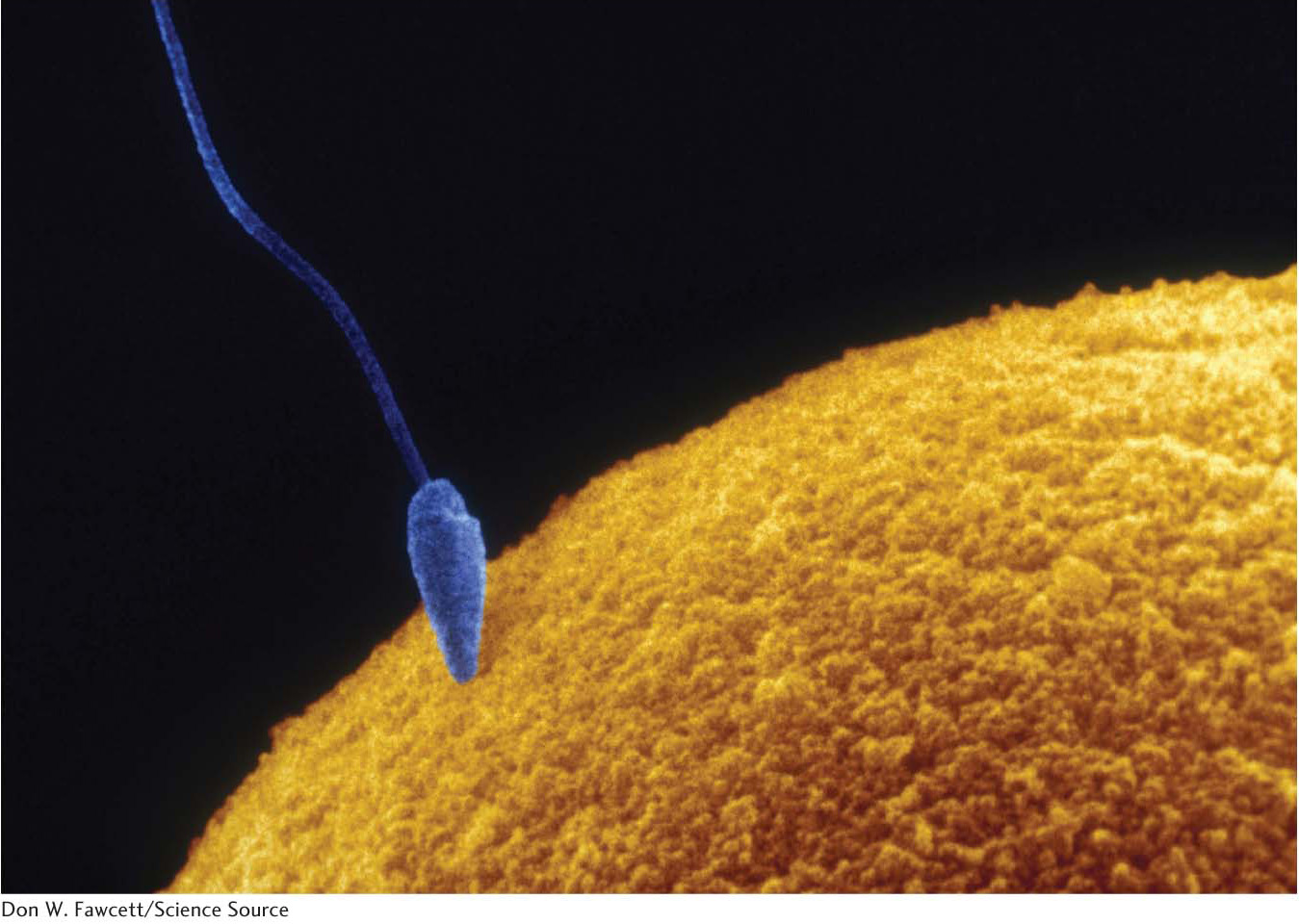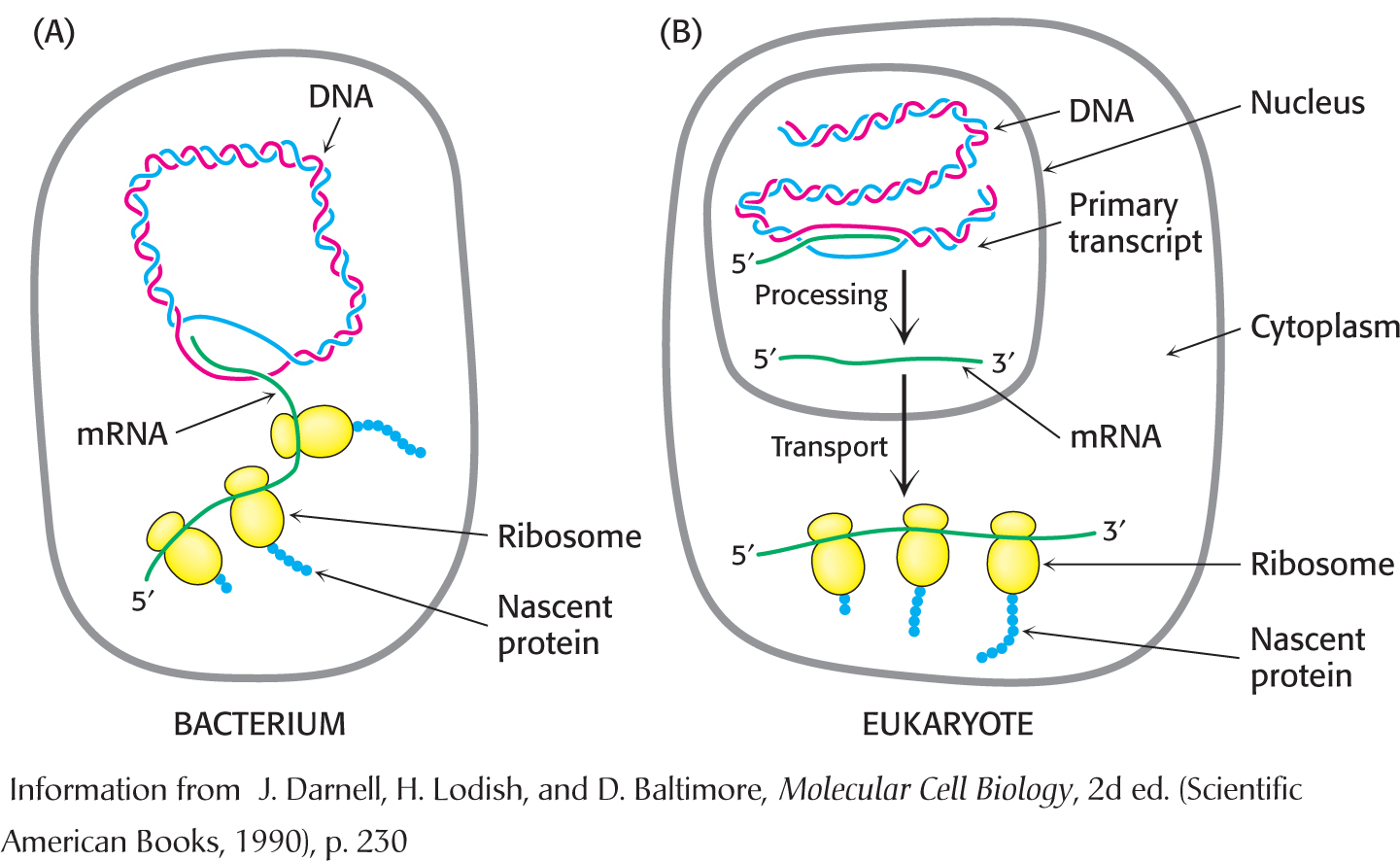
Gene Expression in Eukaryotes


The basics of RNA synthesis presented in Chapter 36 apply across all kingdoms of life. We now turn to transcription in eukaryotes, which is much more complicated than in bacteria because of a much larger genome and the resulting increased complexity of transcriptional regulation. Although eukaryotic cells from any organism have the same DNA, they have a remarkable ability to precisely regulate which genes are expressed, the time at which each gene is transcribed, and how much RNA is produced. This ability has allowed some eukaryotes to evolve into multicellular organisms, with distinct tissues. That is, multicellular eukaryotes differentially use transcriptional regulation of DNA common to all cells to create different cell types.
Gene expression is influenced by three important characteristics unique to eukaryotes: more complex transcriptional regulation, RNA processing, and the nuclear membrane.
More Complex Transcriptional Regulation. RNA synthesis in eukaryotes is carried out by three distinct RNA polymerases. As in bacteria, these RNA polymerases rely on promoter sequences in DNA to regulate the initiation of transcription. But not all promoters are recognized by each of the polymerases. Adding complexity to regulation is the presence of many different types of promoter elements. Bacteria, in contrast, have just three promoter elements (the −10, −35, and UP elements). The eukaryotic promoter elements can combine in a multitude of ways, greatly increasing the number of types of promoters.
Page 676RNA Processing. Although both bacteria and eukaryotes modify RNA, eukaryotes very extensively process nascent RNA destined to become mRNA. This processing includes modifications to both ends and, most significantly, splicing out segments of the primary transcript. RNA processing is described in Chapter 38.
The Nuclear Membrane. In eukaryotes, transcription and translation take place in different cellular compartments: transcription takes place in the membrane-
bounded nucleus, whereas translation takes place outside the nucleus in the cytoplasm. In bacteria, the two processes are closely coupled (Figure 37.1). Indeed, the translation of bacterial mRNA begins while the transcript is still being synthesized. The spatial and temporal separation of transcription and translation enables eukaryotes to regulate gene expression in much more intricate ways, contributing to the richness of eukaryotic form and function.
